2020 Kuranda soybean on sandy loam – Giru
Grower: Armin Wessel.
Armin does his own bug checking but stays in contact with local agronomists to discuss problems and to be aware of problems that they see in the wider district.
Location: Giru
Area: 9 ha. A 2018/19 cane crop was harvested in November 2019. Then the block was planted to Kuranda soybeans in January 2020, which yielded 3 t/ha. The block has now been planted again to Kuranda soybeans.
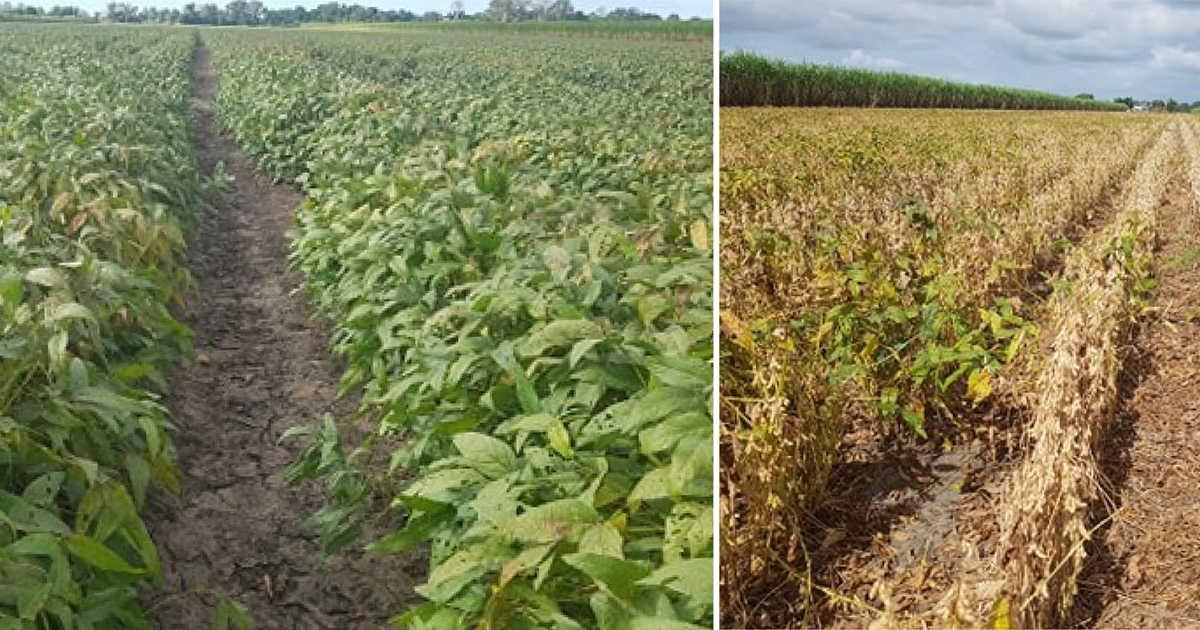 Previous soybean crop on this block.
Previous soybean crop on this block.
Soil type: Sandy loam riverbank soil to loam and a small area of cracking clay.
Pre-planting preparation
- Variable rate gypsum, 2 to 8 t/ha and banded mill mud at 90 t/ha in some poor flood eroded patches.
- 180 kg/ha KCl banded.
- Ameliorants and fertilisers incorporated by zonal ripping and bed made with a rotary hoe bed former combination.
Planting:
- Soybeans planted between 11 and 13 July during showery weather.
- Planting rate 330,000 seeds/ha.
- In-furrow fipronil applied.
- Seed inoculated with rhizobium in peat, using a cement mixer.
- Planted with a Covington planter.
After planting:
- 3 L/ha Stomp/Rifle was applied and watered in.
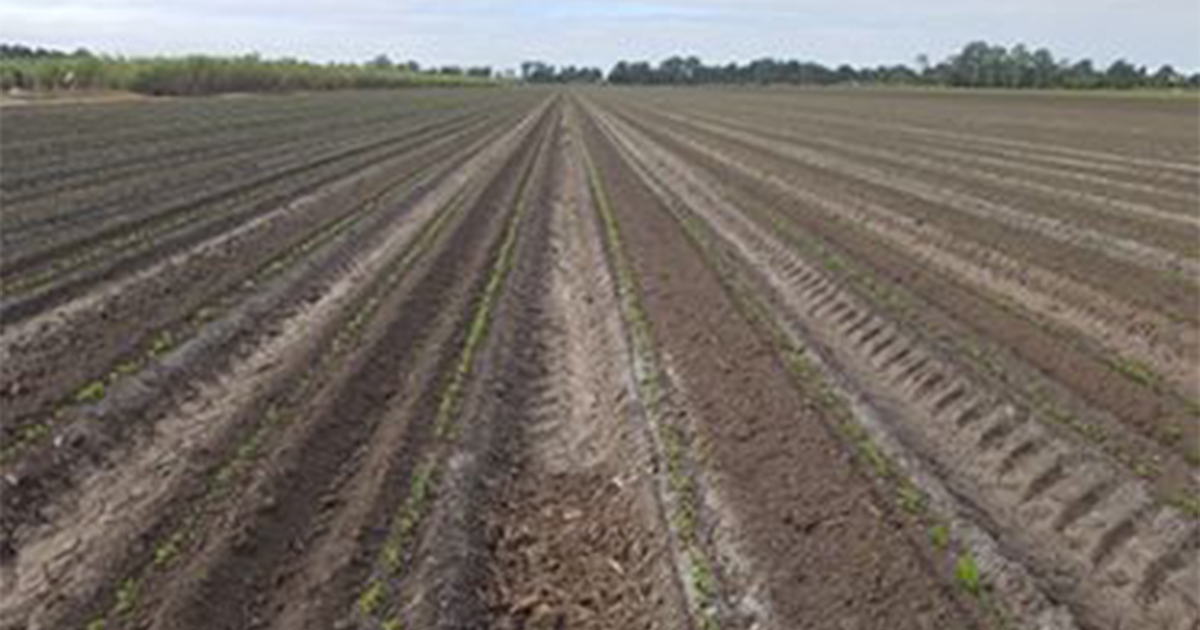
20 July 2020 – Beans are up.
Update 1: 28 July 2020
- 60 mm of rain last week
- A few Kuranda volunteers and the odd vine came up.
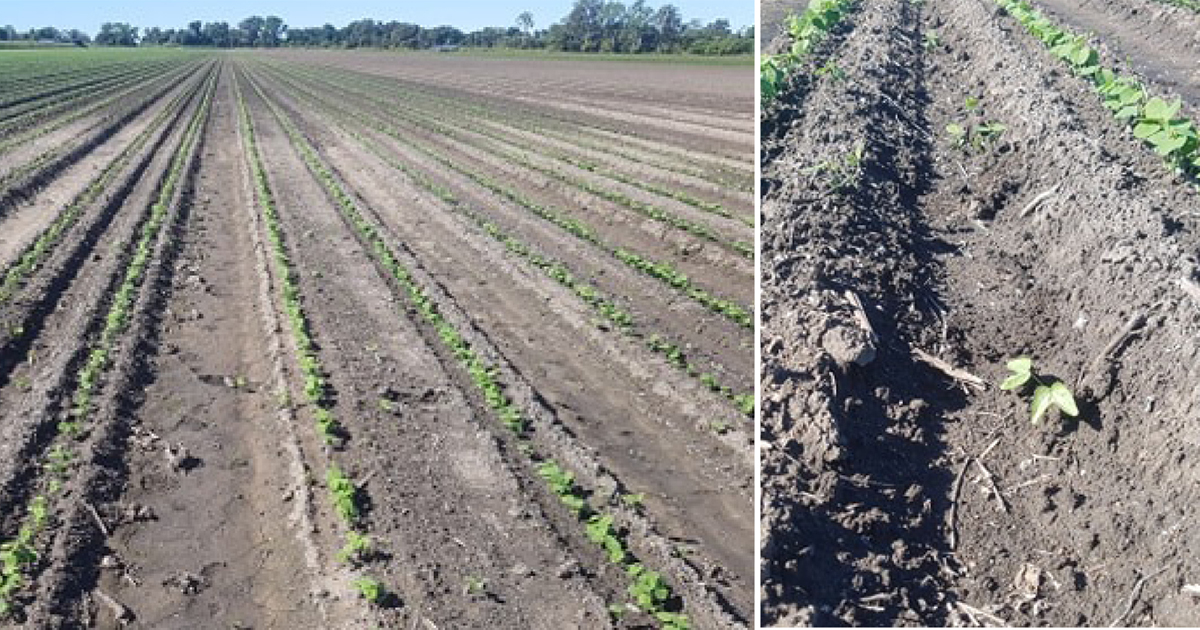 Rain has germinated a few vines and volunteer soybeans from the previous season.
Rain has germinated a few vines and volunteer soybeans from the previous season.
Armin's son opted to chip the few vines in return for the money that could have been spent on a Spinacker spray, including application cost. Win win for the environment and a keen young man's wallet!
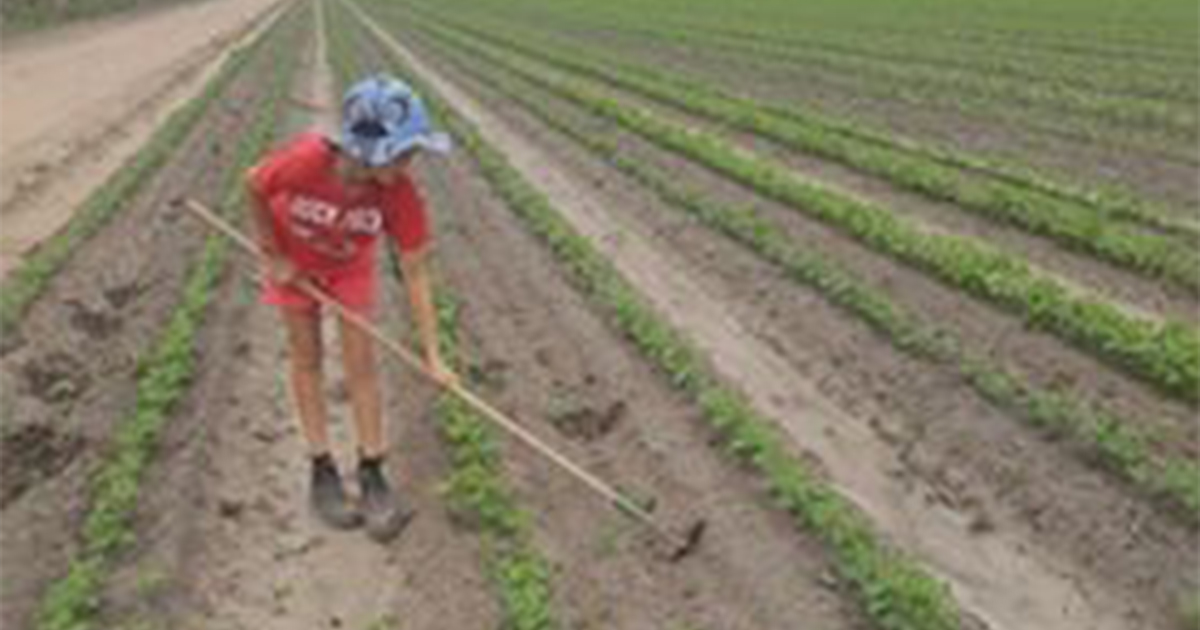
Update 2: 6 August
- Nodulation check – successful!
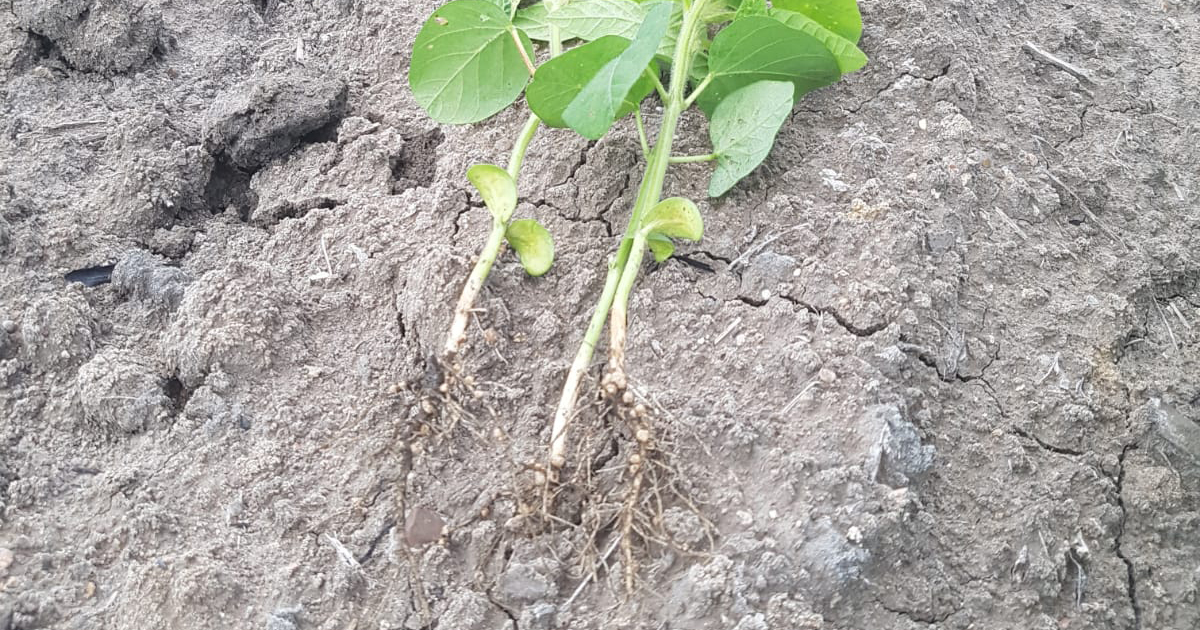
Update 3: 14 August
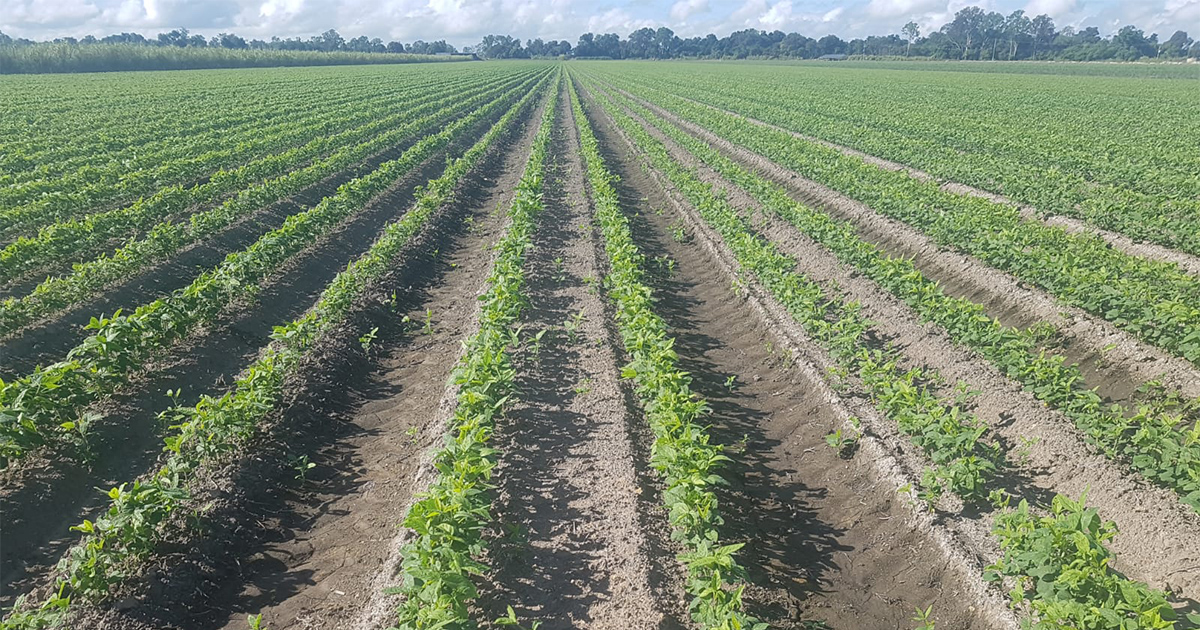
- Crop is growing well
- First minor insect damage is apparent.
- 50 mm flood irrigation applied.
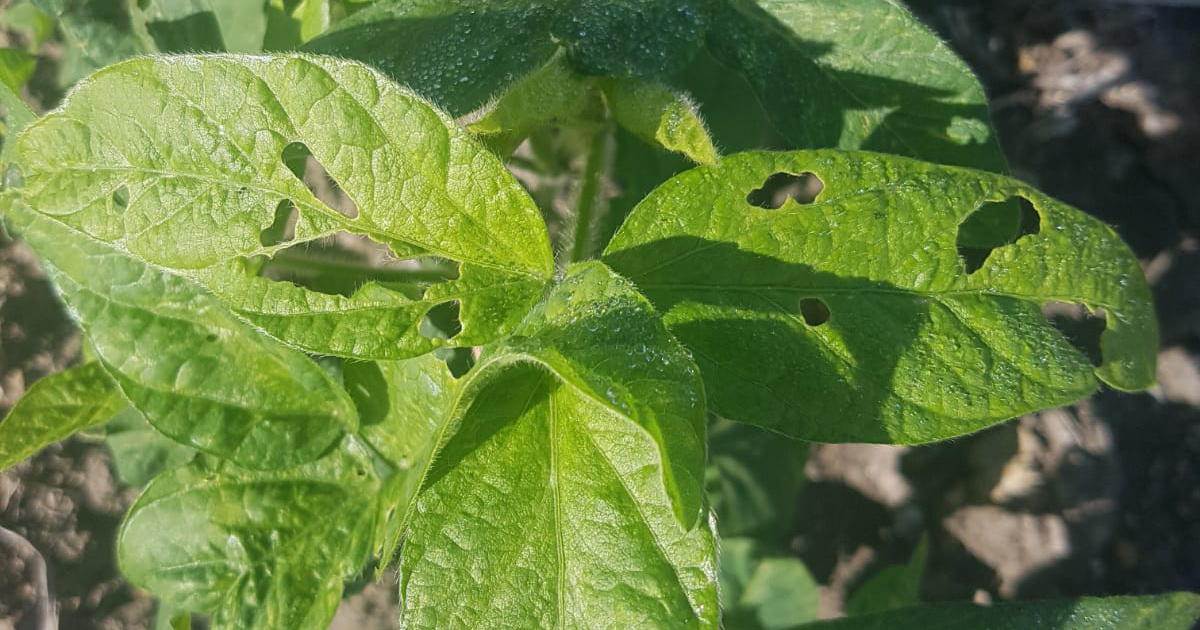
Update 4: 21 August
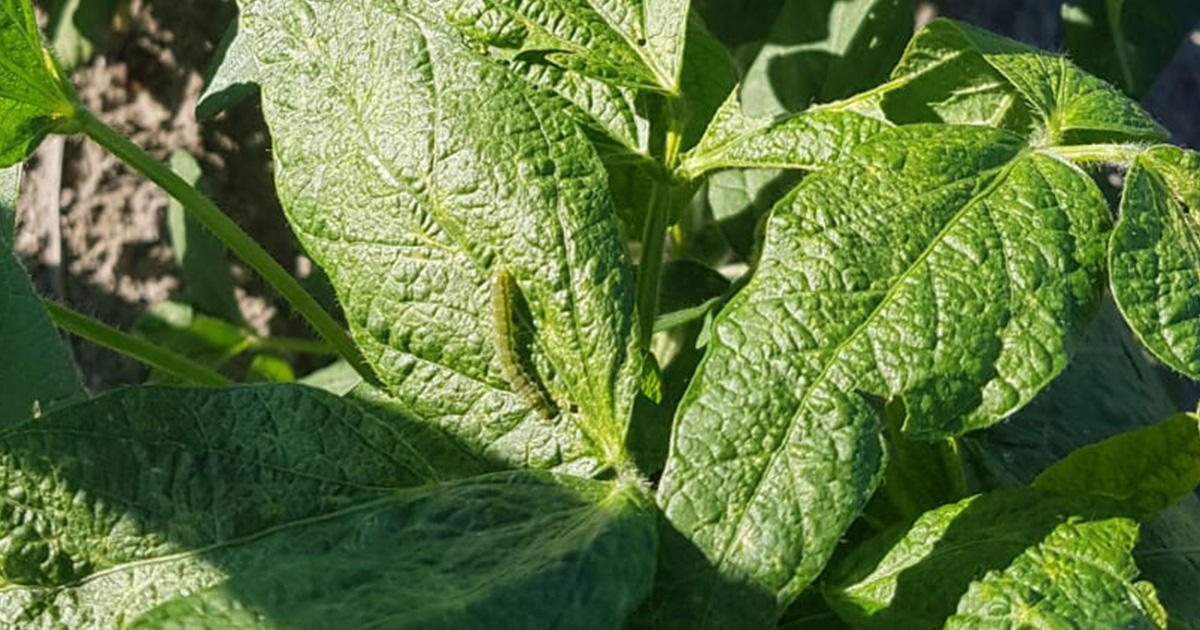
- Chipping the rest of the Kuranda block is underway.
- There is some leaf damage below threshold from a mix of insects but the beans are out-growing it at the moment.
- Beneficial insects are building up too.
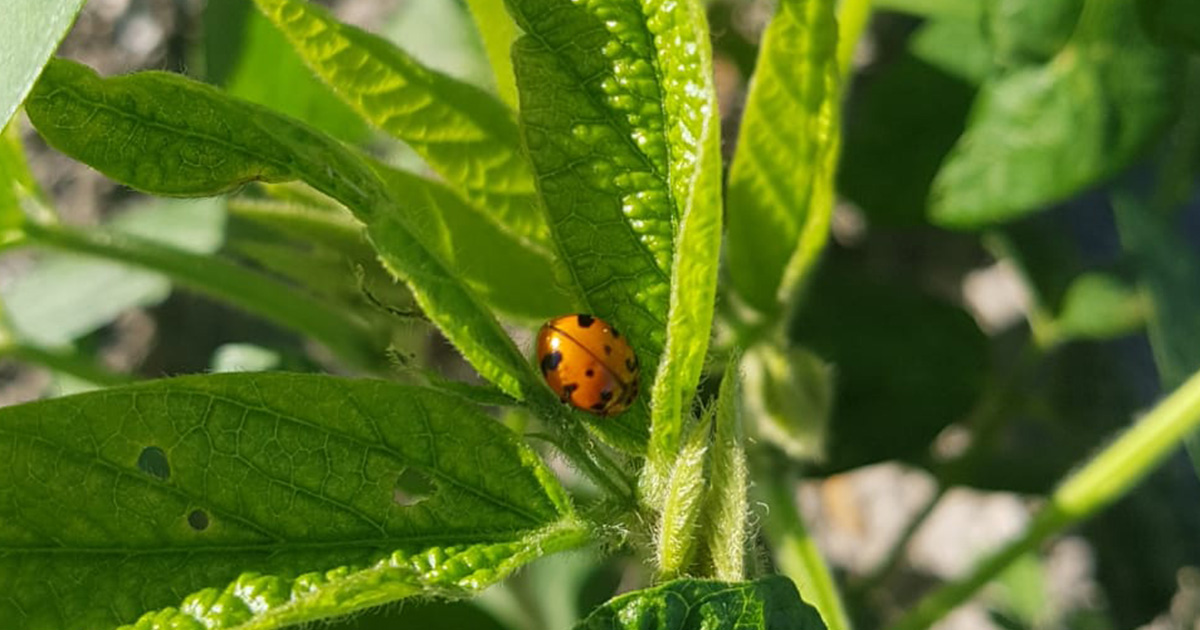
Update 5: 29 August

- The Kuranda block is powering along.
- Insect pressure is low but Armin is finding a lot of dead red shielded bugs on the ground. Perhaps they are flying in then starving because the soys don't have any pods yet?
- 8.5 kg/ha of zinc sulfate plus 25 kg of Nitra King dissolved in 240 L/ha of water as foliar fertiliser. Zinc is very low in this alkaline soil and adding a bit of leftover fertiliser (with some N and even a bit of K) from the last cane block to the mix should help uptake of the zinc. The crop responded immediately, visibly turning a darker shade of green overnight.
- The block is being irrigated again. The soil is not wetting up very well yet – only about 50 mm was taken up in the first watering and Armin estimates it is taking about 70 mm this time.
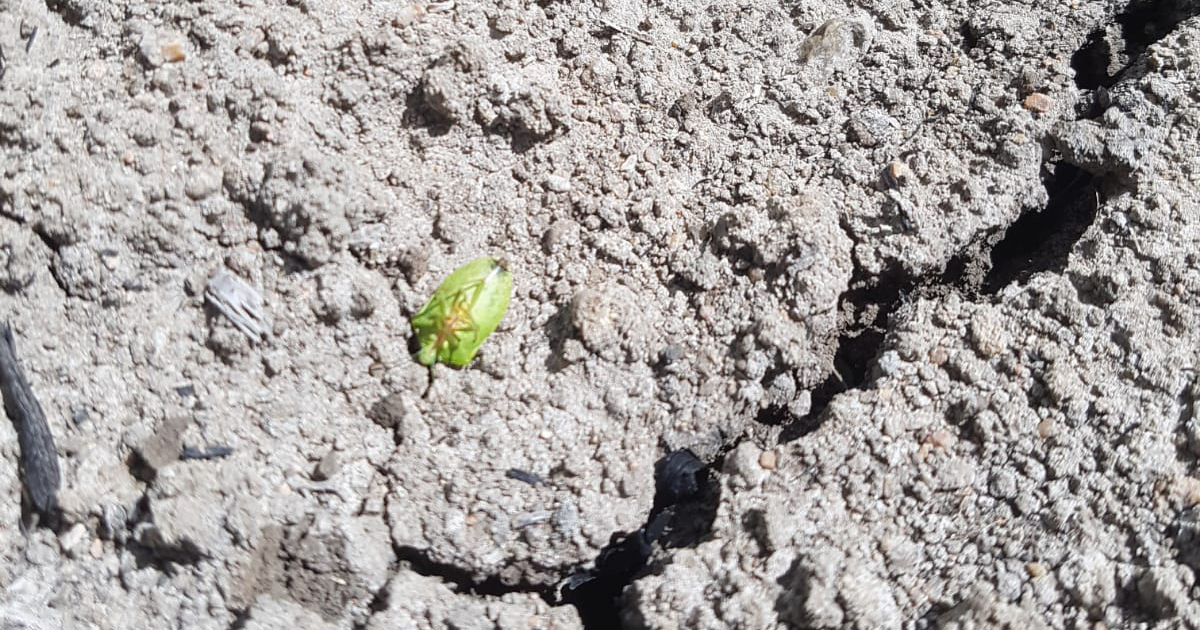
Update 6 – 15 Sept
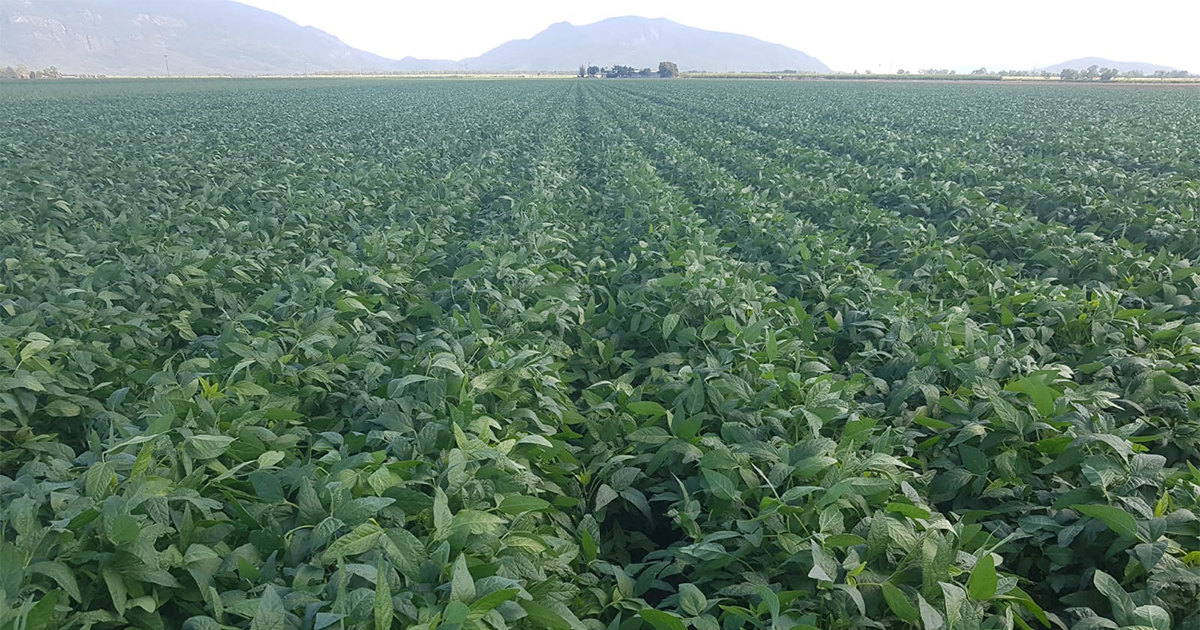
- Kuranda are growing well with minimal insect damage.
- After the last irrigation Armin found mainly heliothis and a few loopers on the beat sheet. There were also some GVBs and red shielded bugs.
- At 0.6 GVB he is ignoring these pests at the moment because the beans just started flowering and only have minute pods and because there is also a low level white fly infestation that is kept in check by ladybirds and lace wings. If he was to use hard chemicals on the GVBs it might create a flare up of whitefly by killing their predators. He would also kill predators that 'work' on the heliothis.
- In the previous Kuranda crop he had bad outbreaks of heliothis and cluster caterpillar and even Altacor struggled to clean them up. Armin used Vivus Max (virus product) for the first time and that cleaned the Heliothis up for the rest of that crop cycle.
- After that good experience last summer, Armin decided to use the left- over Vivus Max but this time added DiPel DF (BT product for loopers etc.) for the first insect spray on my winter Kuranda. Hopefully this virus/bacterium mix will deal with the heliothis/looper issue for a while.
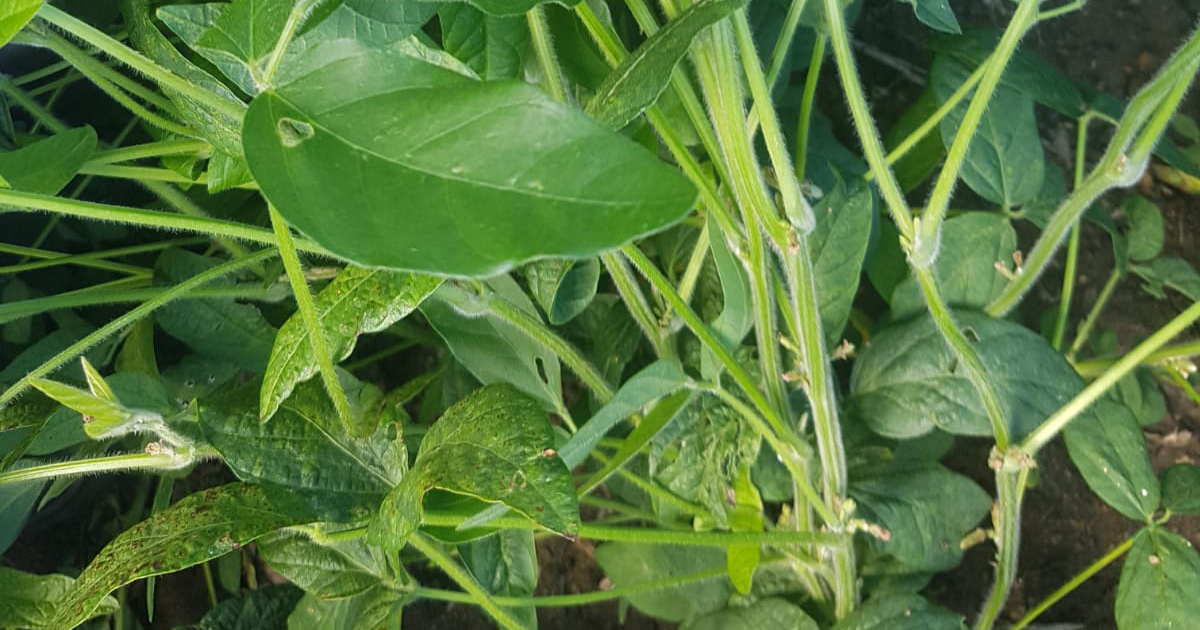 Crop is flowering and small pods are forming.
Crop is flowering and small pods are forming.
Update 7 – 20 Sept
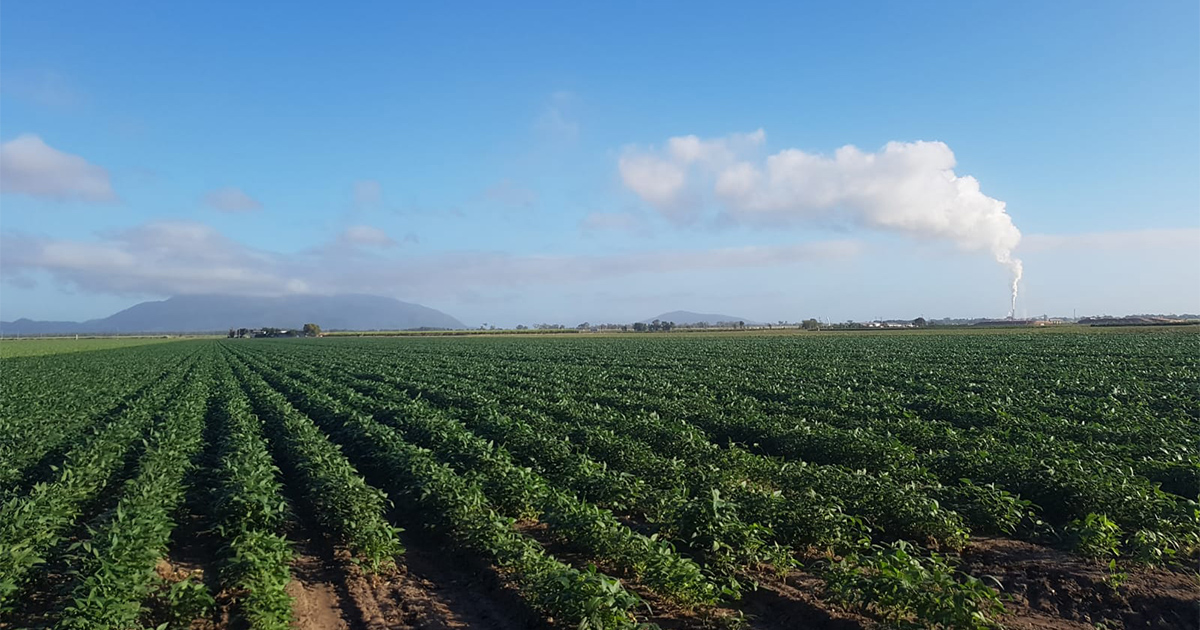
- The Kuranda crop started the week with tiny pods, but warm and sunny weather boosted growth and Armin says you could almost watch the pods growing bigger!
- Soil water was used accordingly, and Armin irrigated the crop again.
- DiPel DF and VivusMax were applied after waiting a few days for the 1000 L tank of townwater to lose its chlorination before adding the live organisms.
- The granular DiPel DF product caused issues in the filters during application even though Armin used big 04 nozzles and matching filters to get the water rate up to 240 L/ha. He started at that water rate but even within a single tank noticed that the back pressure from the filters increased slightly and the water rate dropped accordingly towards the end of the tank.
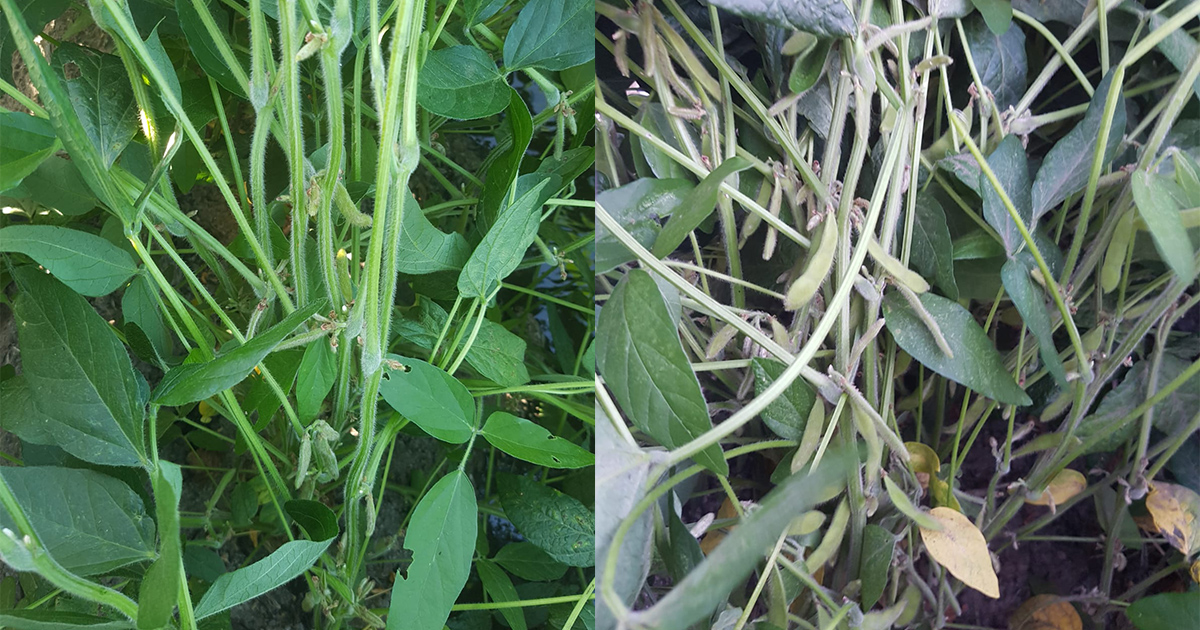 Warm sunny weather has boosted pod development.
Warm sunny weather has boosted pod development.
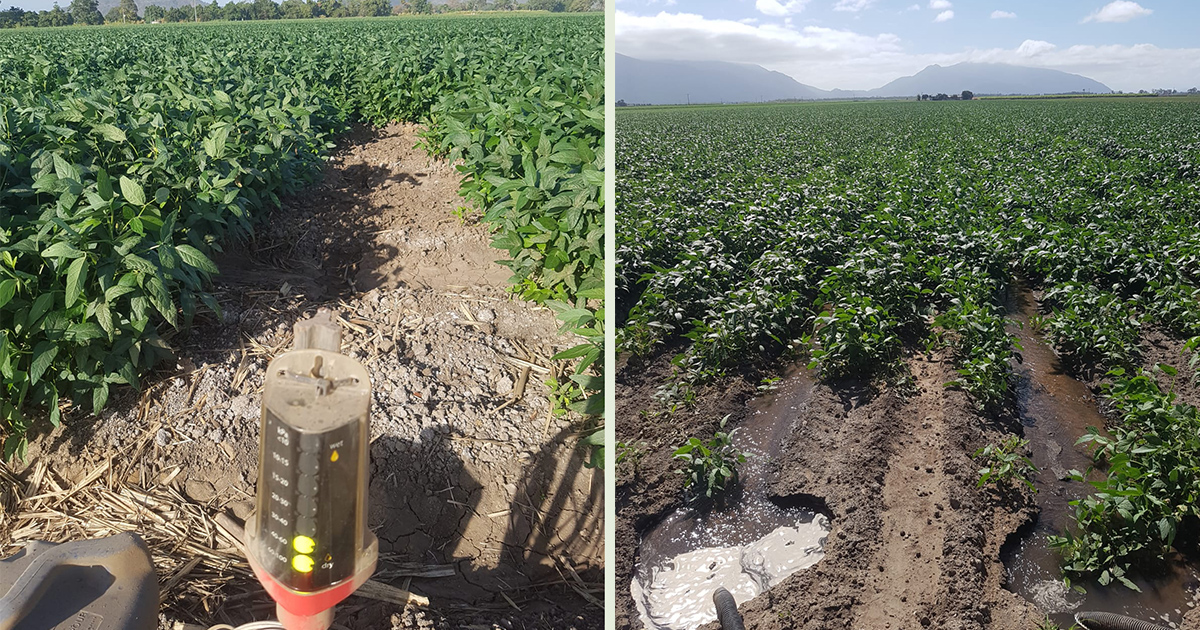 With rapid growth comes frequent irrigations.
With rapid growth comes frequent irrigations.
Update 8 - 28 Sept
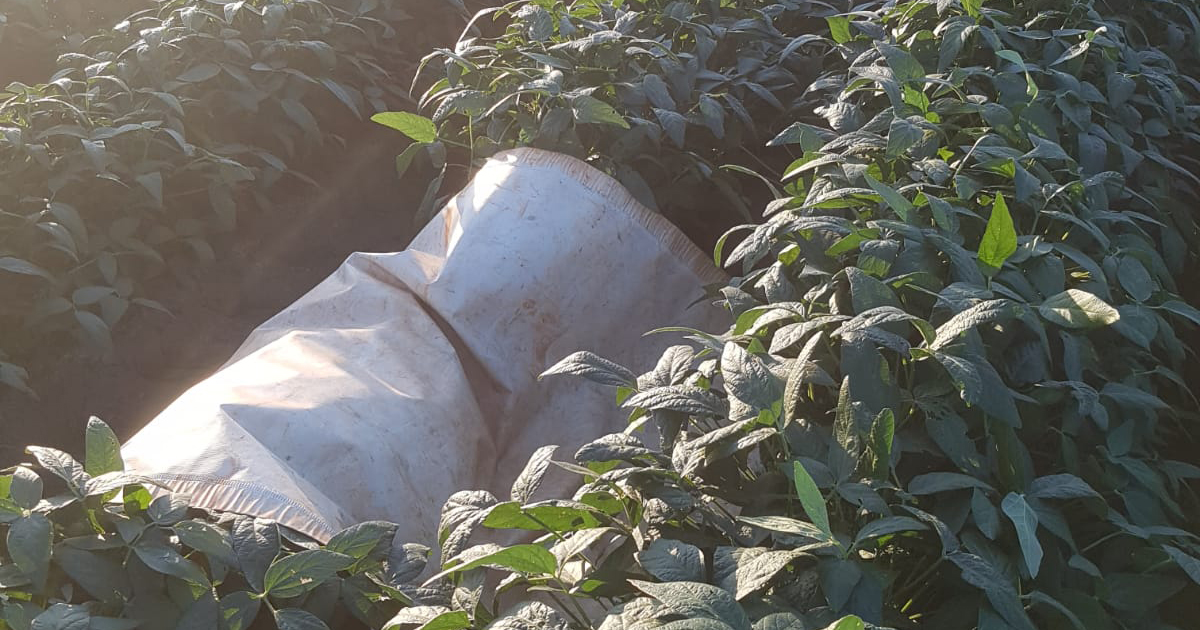
- Crop is not growing in height anymore but pods are getting bigger.
- Armin conducted two beat sheet checks for bugs – the first before spraying and then followed the same path after spraying.
- To make it easier to identify small bugs he collects 5 beats in a container and then puts his glasses on once for counting!
- The spray was clearly effective with only one sick looper found and no helicoverpa. GVB also went missing although neither Vivus Max nor DiPel cover them. A few red shielded bugs are hanging around but they are still not requiring any hard sprays.
 Beatsheet collections before (left) and after spraying with DiPel and Vivus Max biological sprays.
Beatsheet collections before (left) and after spraying with DiPel and Vivus Max biological sprays.
Update 9 – 5 October
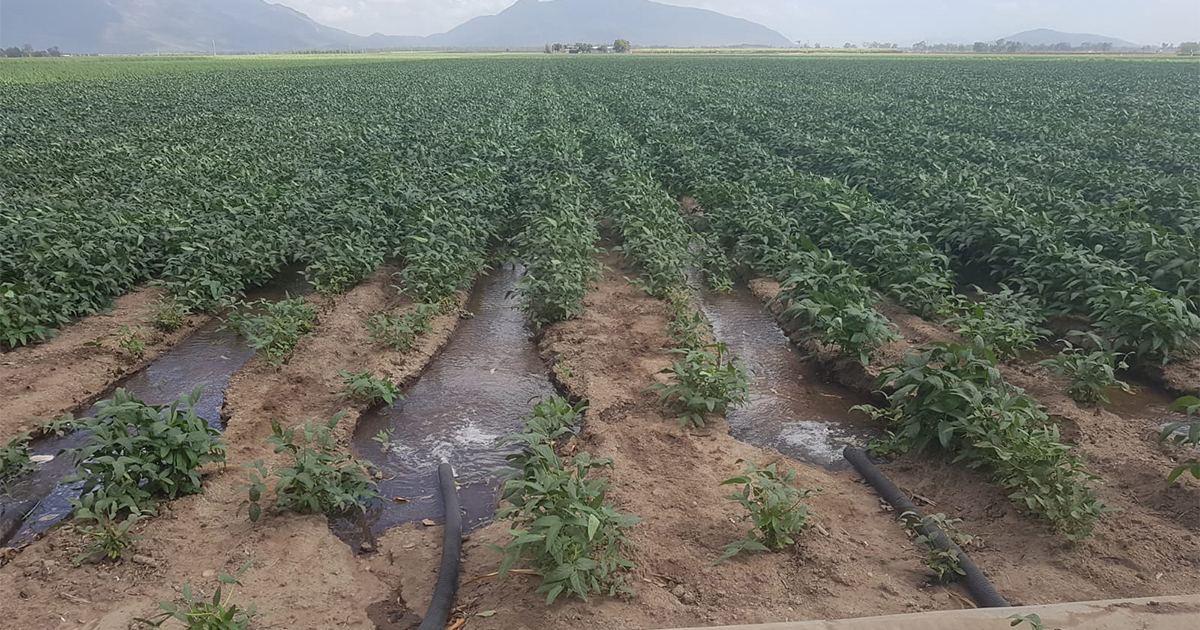
- The block was watered a bit earlier than needed so Armin would have pump capacity for when cane is harvested, and the Hayman block needs watering desperately.
- Pods keep filling, weeds are shaded out and insect pressure is still very low.
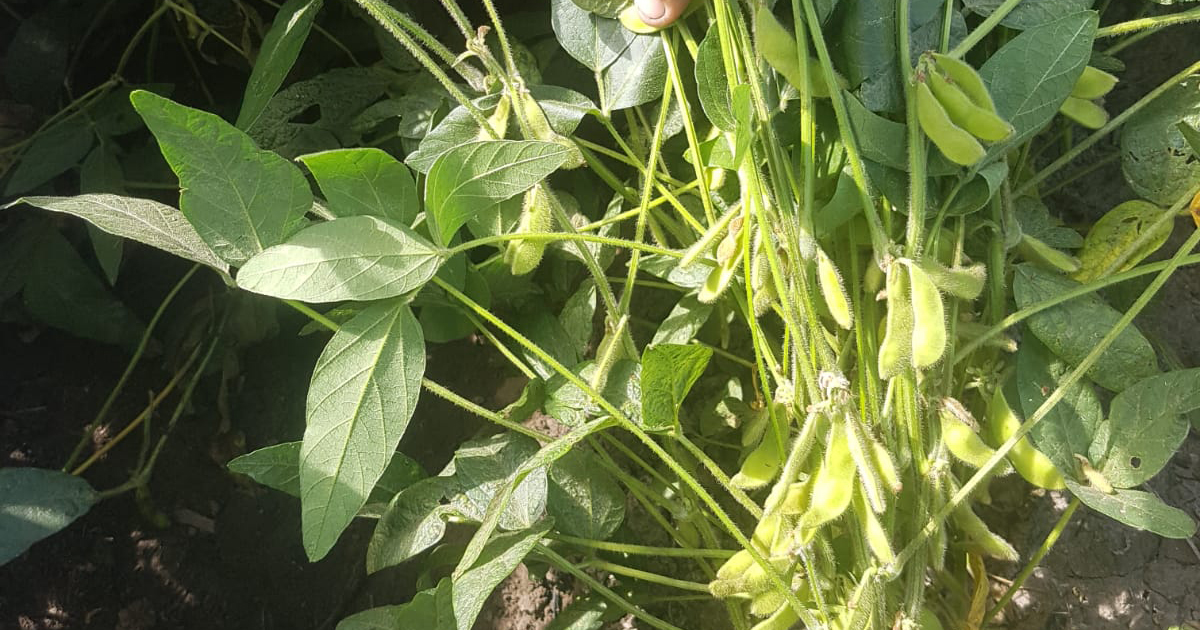 Pods filling fast.
Pods filling fast.
Update 10 – 11 October
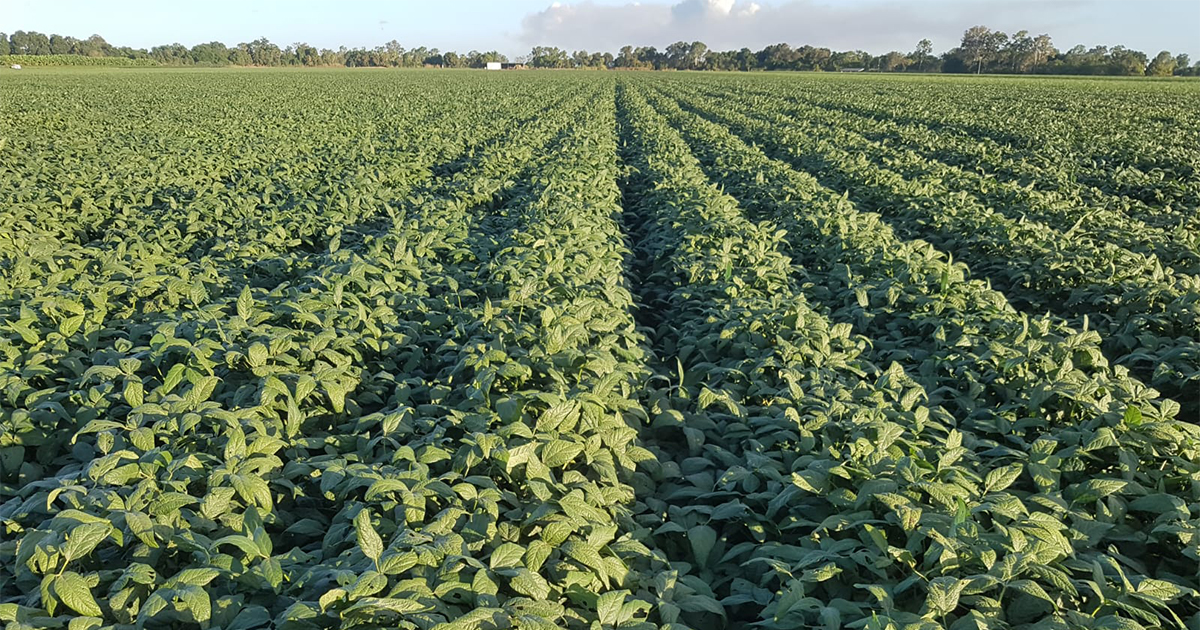
- The Kuranda crop is rapidly filling pods.
- The block looks pretty even after new subsoil drainage lines went in last December followed by a gypsum treatment prior to this crop. Only the most extreme salinity/sodicity hotspot is still showing. Previously about 10% of the block looked like this and this hotspot was a lot bigger and completely bare.
- Insect pressure is increasing. A few bigger Helis and loopers as before but Armin also discovered a few hotspots with lots of small Helis. GVBs and Red Banded bugs numbers are also increasing beyond threshold.
- Armin is waiting for the block and tail drain to dry out so he can spray with the tractor in a few days. He prefers the higher water rate and better coverage of a ground rig compared to aerial applications, provided he can get onto the block.
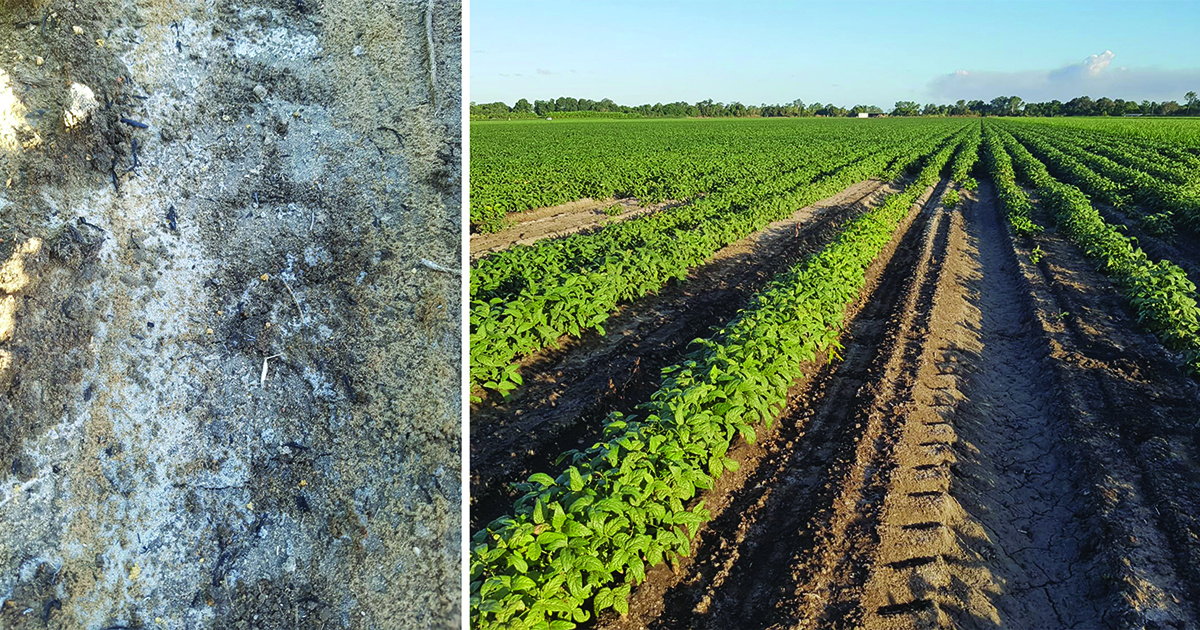 About 10% of the block was previously affected by salt and sodicity but now only a small area is still affected after Armin implemented a drainage and soil amelioration treatment.
About 10% of the block was previously affected by salt and sodicity but now only a small area is still affected after Armin implemented a drainage and soil amelioration treatment.
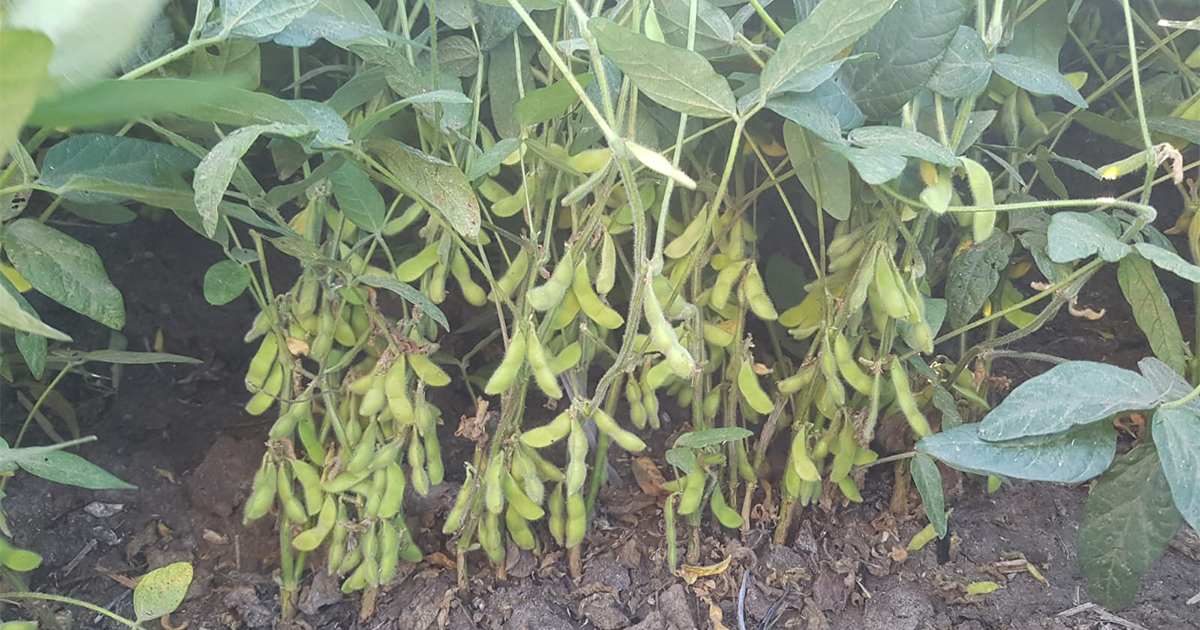 Crop is filling pods.
Crop is filling pods.
Update 11 – 19 October

- The crop was sprayed last week for GVB, red-shielded beetle and helicoverpa. Having already used softer options to control GVB beforehand, harder chemistry was used for this application. The spray was effective.
- Irrigation began after spraying for insects.
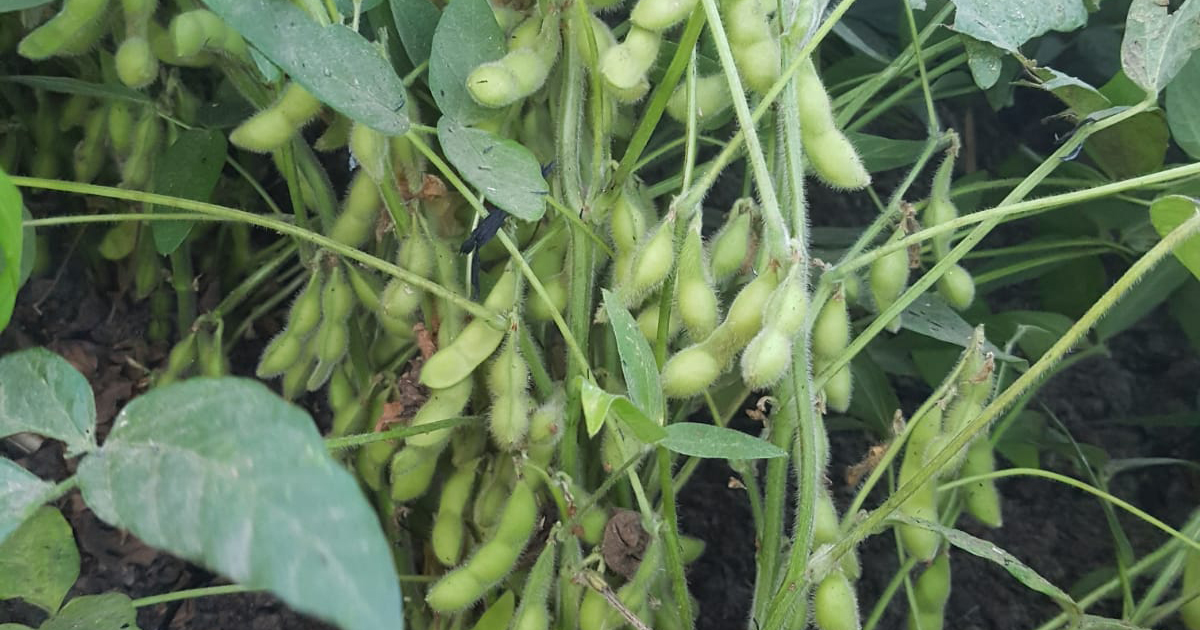
Update 12 – 26 October
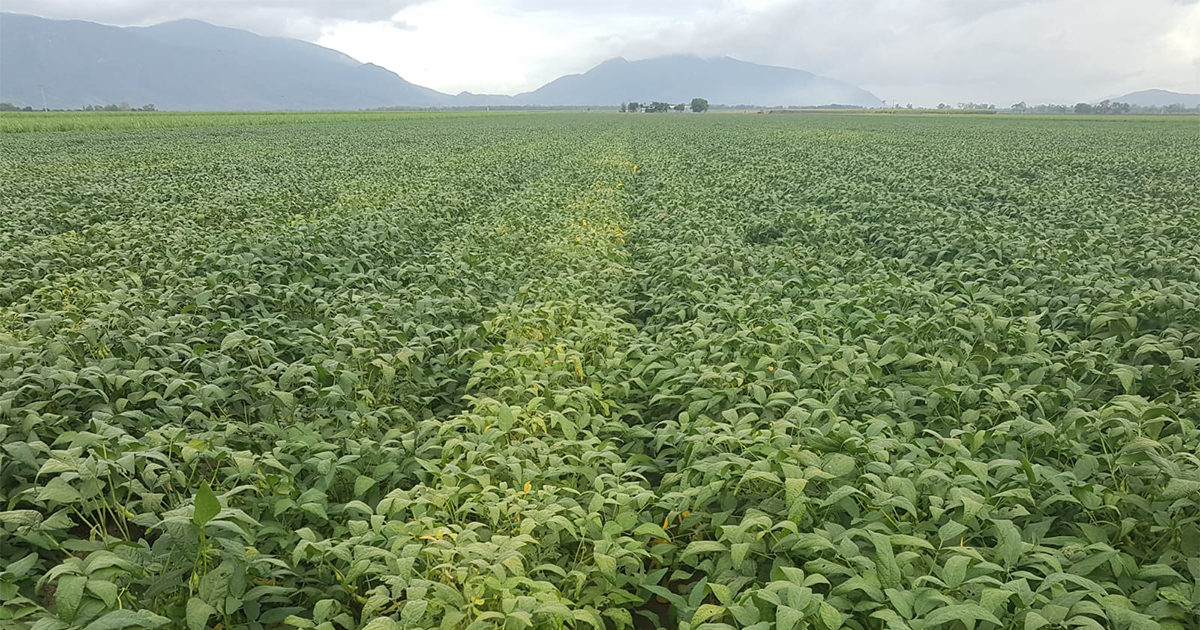
- There are still no insects back in the crop after the 'hard' spray.
- Armin started watering again.
- The beans are starting to turn in spots where they had previously been stressed by salinity or soakage issues.
- The crop has lodged to the west over the growing season but a storm this week actually blew a lot of plants up again, while dumping 19 mm of rain.
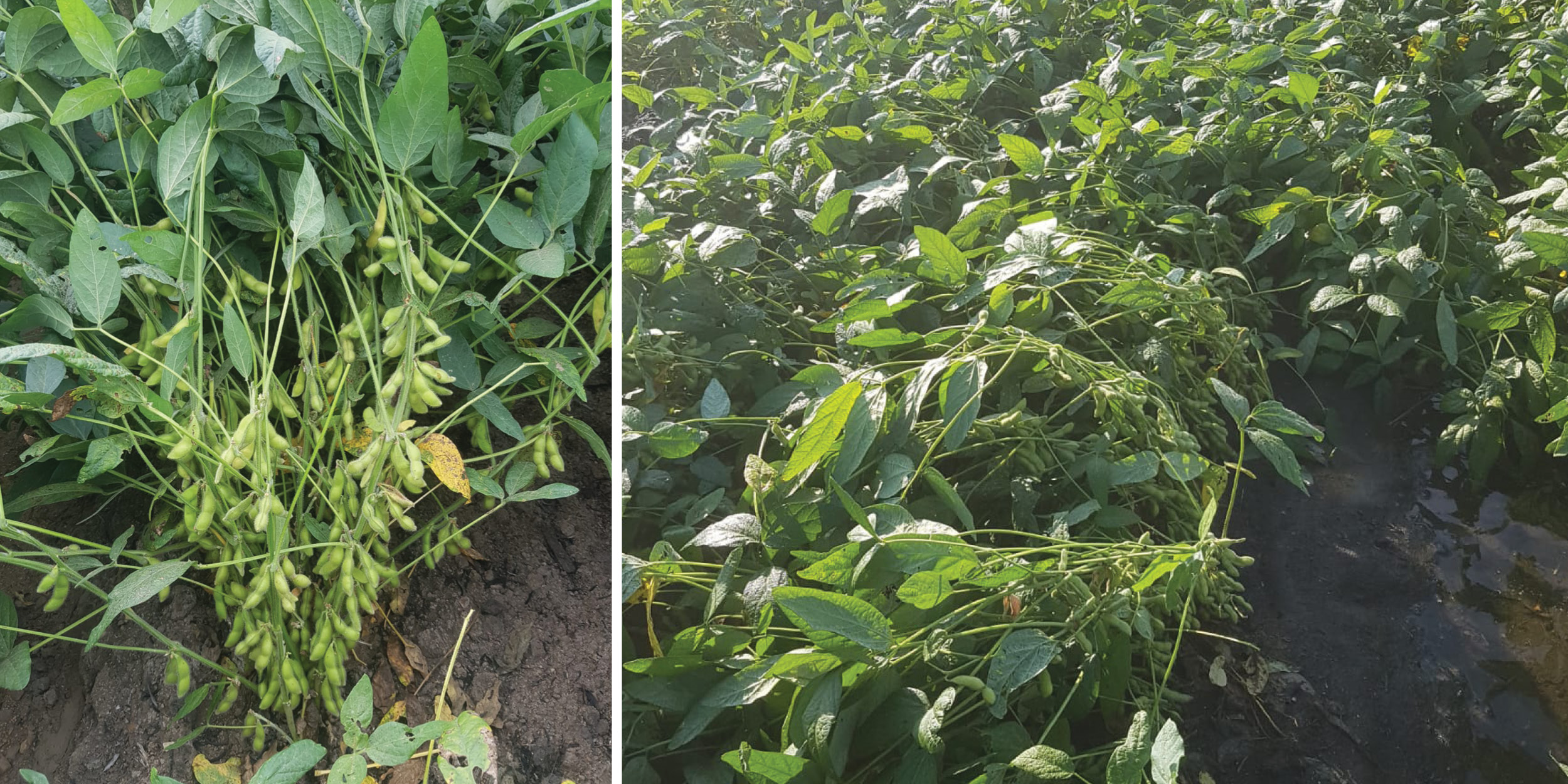 Podding (left) and reverse lodging (right).
Podding (left) and reverse lodging (right).
Update 13 – 2 November
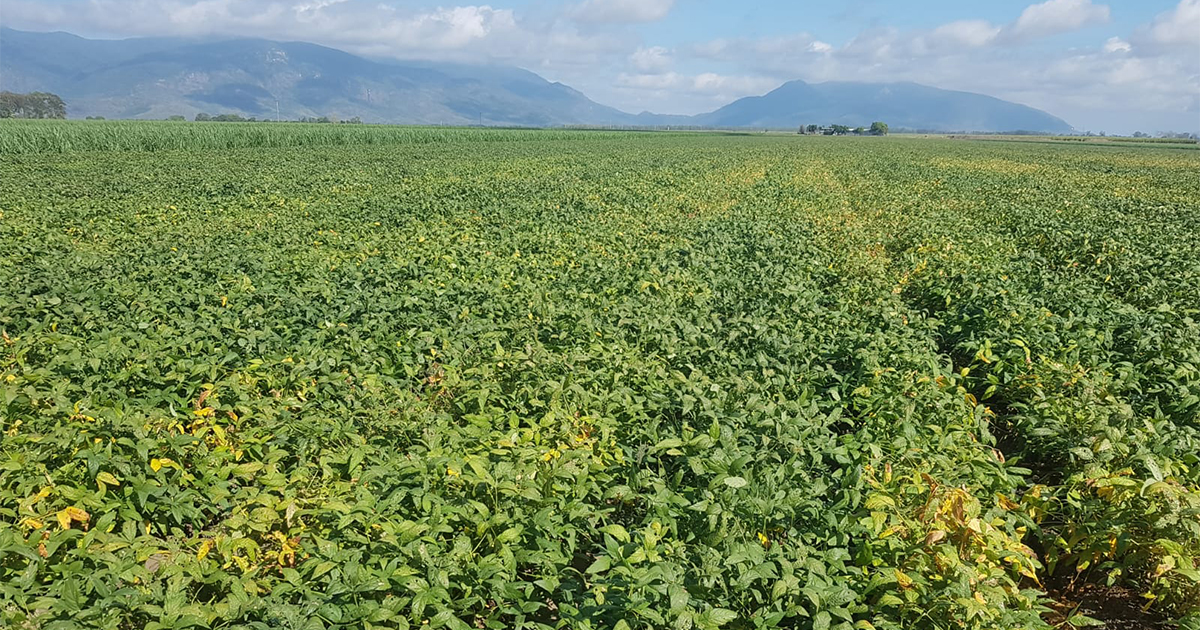
- This week was all about managing insect pressure.
- After using hard sprays in the Kuranda crop, the pest species recovered first.
- Last Monday Armin started to see a few adult GVBs and RSBs and found more adults and several hotspots with first and second instar offspring on Friday.
- Since the crop has been watered and blown ower by the previous storm, Armin opted for an aerial spray with Shield and salt, which was done on the weekend.
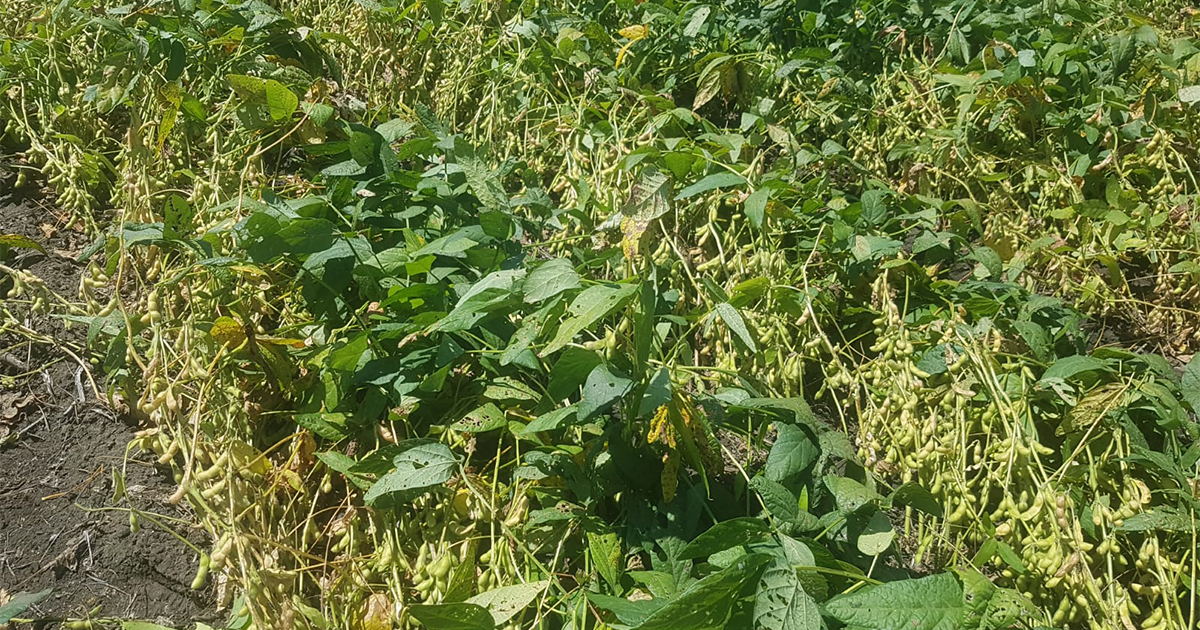
Update 14 - 9 November
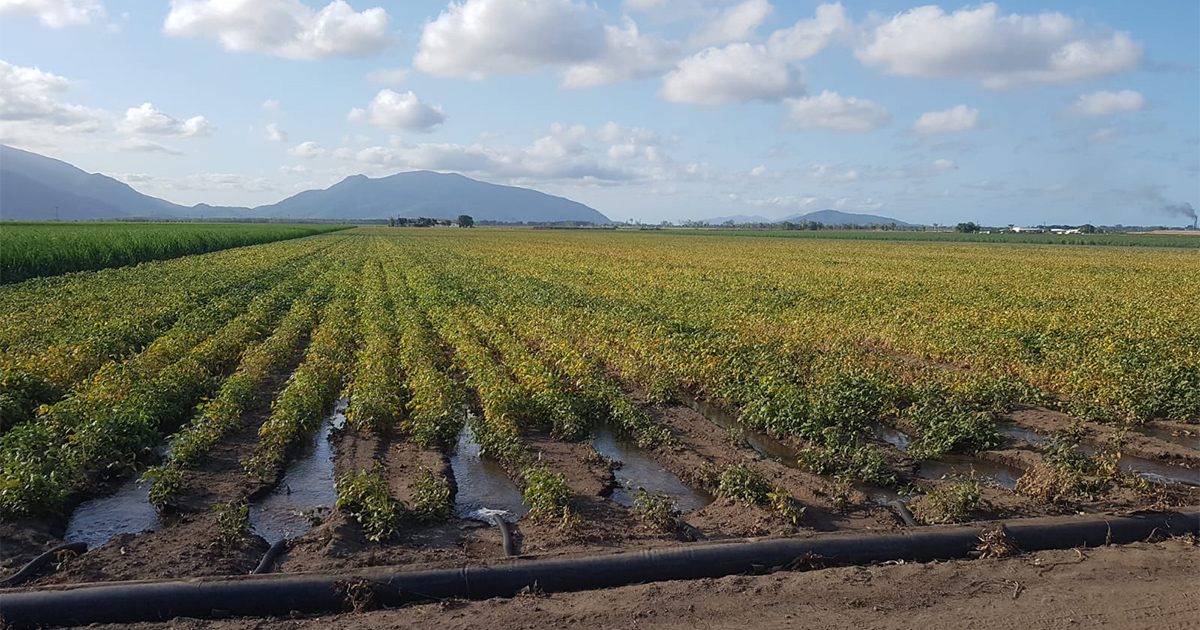
- A few loopers and cluster caterpillars are present but they are sick and probably starving on their yellow leaf diet!
- Shield took care of GVBs and Armin only found two RSBs in 10 beats.
- The crop is turning now but it was running out of water while a third of plants and pods are still green. It is being watered now, hopefully for the last time.
Update 15 – 14 November
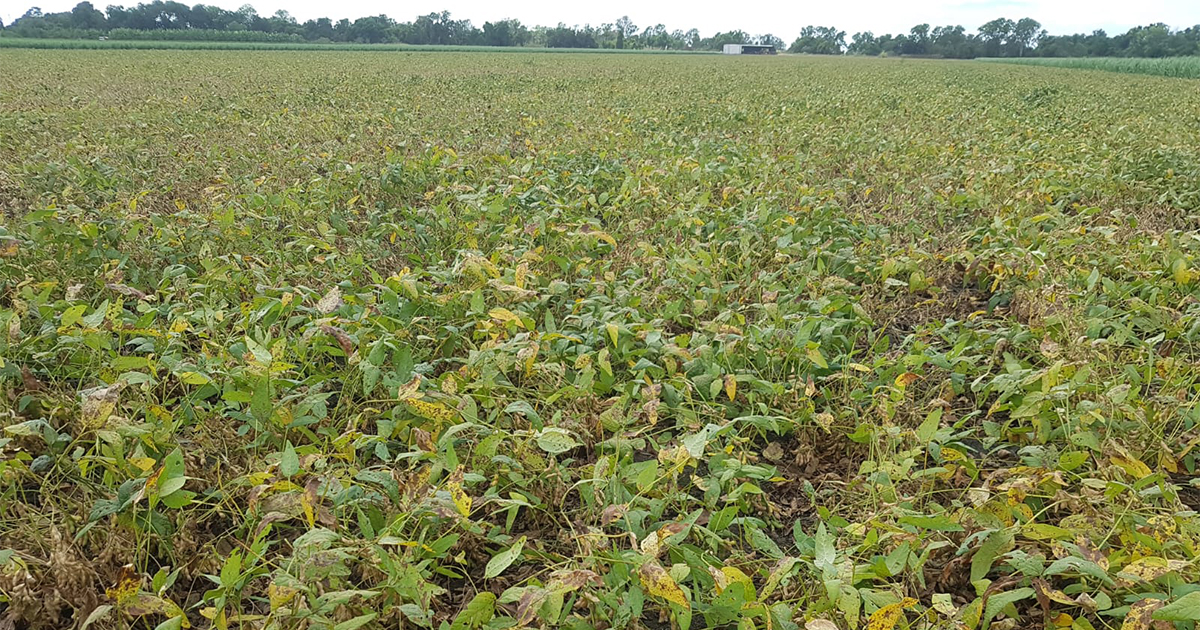
- The crop is maturing evenly.
- The block is still pretty wet as the beans are not using much water. Armin found around 0.25 GVB and RSB of all ages per beat and 2 sick grubs in 10 beats. He decided not to spray for that as most pods are now yellow, pretty hard and ripe.
- Harvest time is fast approaching. There will be some losses: Plants are down in the furrows and the lower pods, even of plants that have not lodged, are touching the ground. It would have been good to have rolled the block after planting to make harvest easier. Armin has added a roller to his Christmas list!
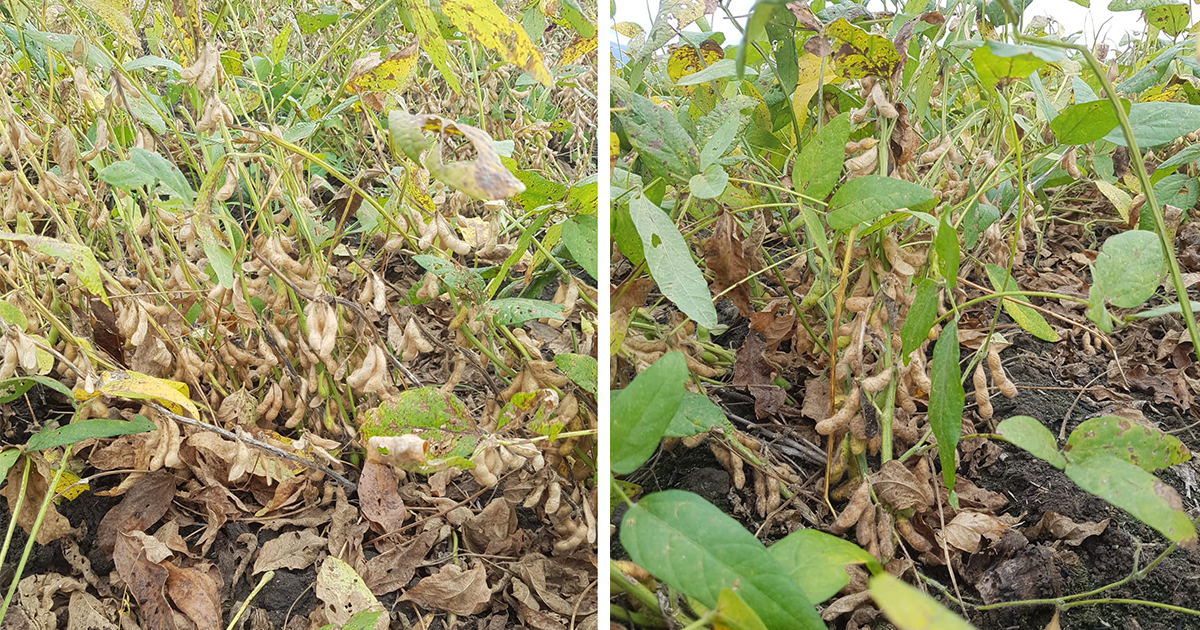 Low pods and lodging are likely to contribute to some losses at harvest.
Low pods and lodging are likely to contribute to some losses at harvest.
Update 16 – 23 November
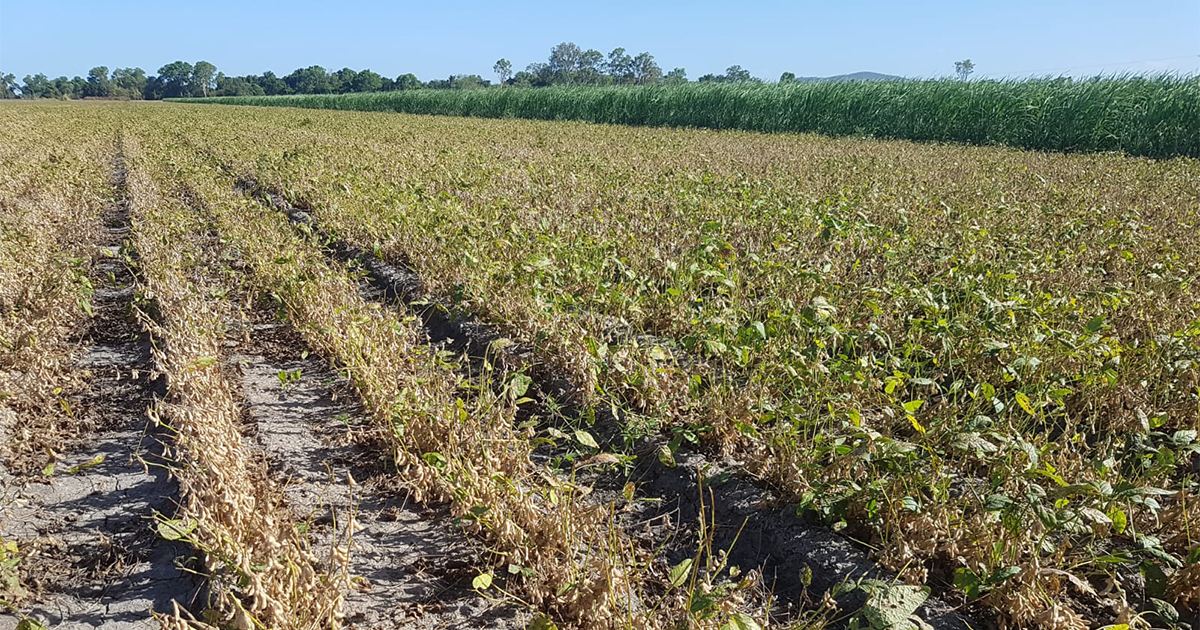
- The crop is drying out and although almost all pods are yellow, about half the leaves are still green.
- Armin hand harvested a sample on the (very windy) weekend and the sample tested at only 9% moisture.
- Unfortunately the harvesting contractor has a few other jobs to do first, and arranging trucks to take the beans to markets in the south is difficult.
- At this stage harvesting will have to wait until late next week.
- Because of the delay, Armin has decided to prepare the crop for harvest using a glyphosate spray one morning early this week while the dew is still on the plants, instead of using Reglone. Using glyphosate will help control weeds that have started to grow now that the crop canopy had opened up.
- Reglone just burns the leaves off and can also dry the crop out faster, making it more brittle and potentially resulting in higher harvest loss, especially if there are a few light showers later this week as forecast.
Update 17 – 30 November
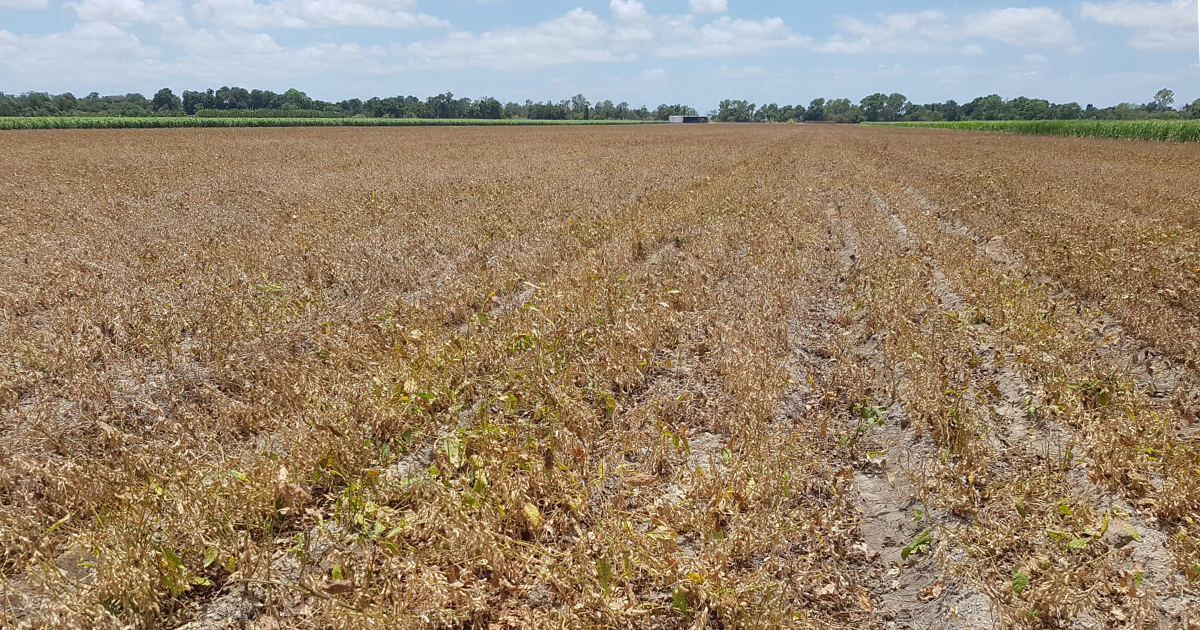
- Kuranda leaves are drying out after glyphosate application. Armin hopes to get them harvested this week.
Update 18 – 8 December
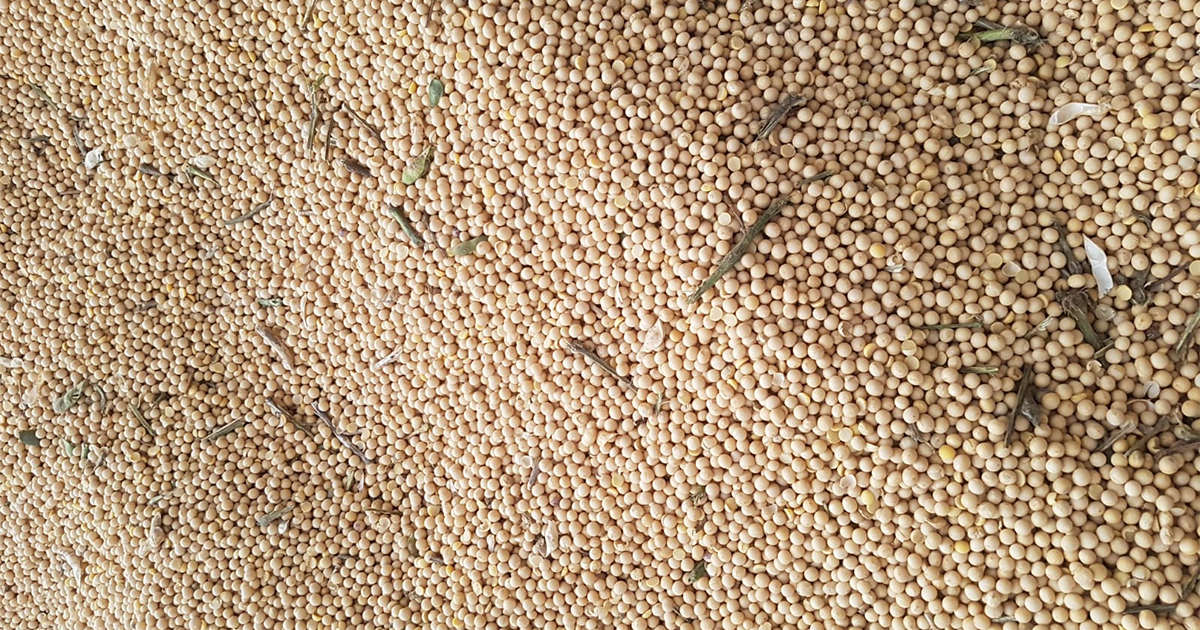
- The crop was harvested last week as planned.
- The beans were already overly dry and there were some split beans in the sample.
- As expected the uneven beds and lodged crop with plenty of low pods caused harvest losses. That was made worse when the harvesting contractor damaged his flexible front and had to use a rigid one instead. The rigid front often bulldozed dirt on one bed while missing a lot of the low pods on the other beds.
- Armin is very keen to get a roller for Christnas and will also move the depth wheels on his planter off the beds next time he plants.
- Armin is now hurrying to work the ground, pre-water to bring up weeds and volunteers and then hopefully plant his first-ever peanut crop just after Christmas.
Read Pulse Check blog articles | Pulse Check Coastal facebook | Subscribe to the monthly newsletter

